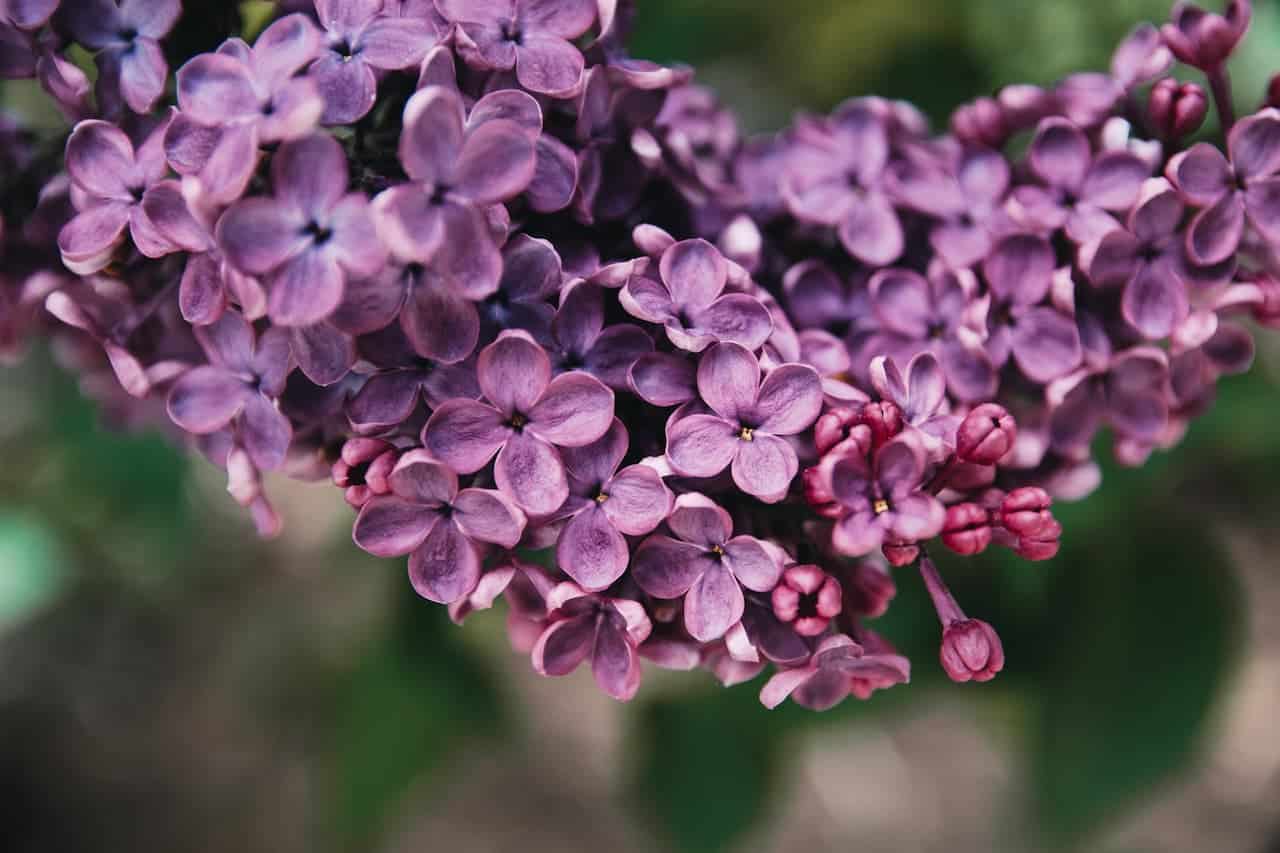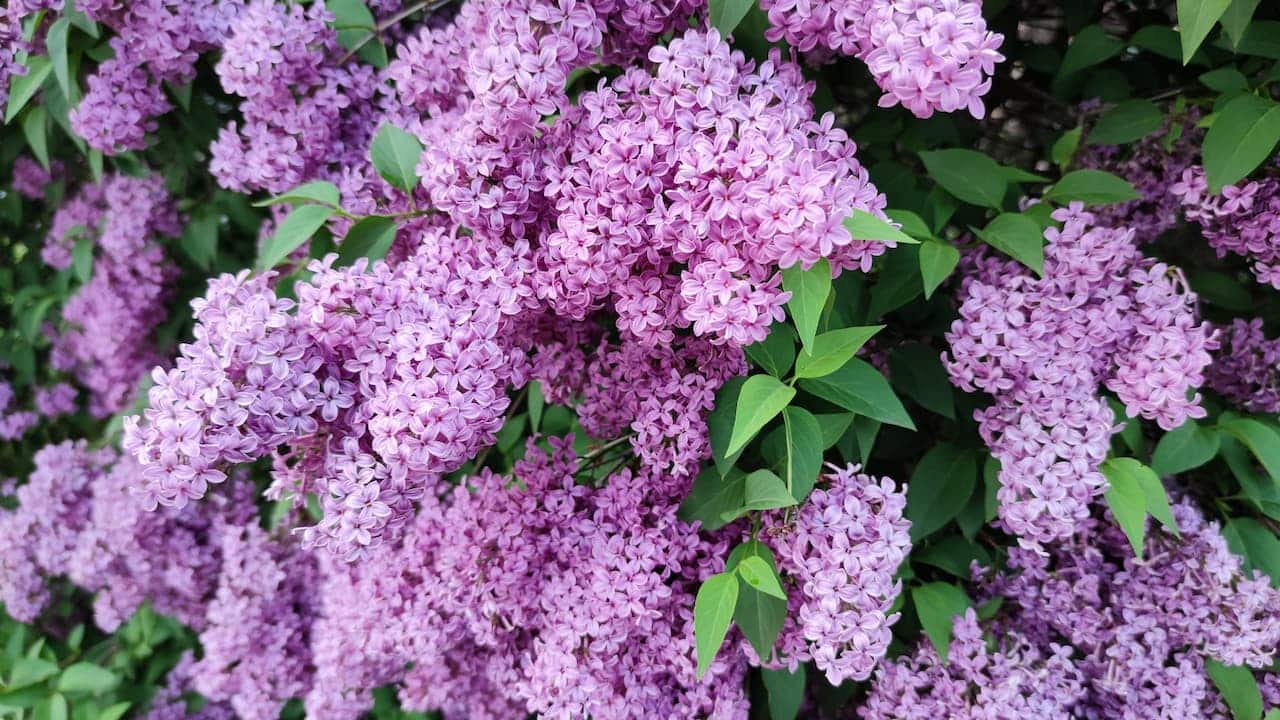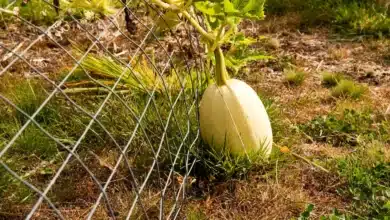How to Prune Lilacs
Lilacs are said to blossom more profusely on fresher wood, so if you’re wondering how to prune them, it’s probably a good idea to get rid of some of the older canes. To be sure, newer is a relative phrase.
Flowers are rarely seen on wood that is less than three years old, and the best bloom production occurs on canes that are five to eight years old.
How Often Should Lilac Bushes Be Pruned?
There’s no need to second-guess yourself on when to trim lilacs; just do it within two weeks after when they stop flowering in the spring.
It’s best to wait until fall to prune your lilac shrub, as that’s when the buds form that will last through the winter and blossom in the spring.
If you’d rather trim when the plant is dormant, you can do it in late winter, however, doing so will result in fewer blooms. Here are the standard and alternative methods for cutting back a lilac shrub.
The first thing you should do to maintain your lilac bushes is to deadhead them. The following steps will help you how to prune lilacs
Step 1
The first step in trimming lilac plants is to pick off the faded, shriveled blossoms. If you want to remove a fading flower cluster, look for the first pair of leaves under the cluster and cut them above them.
Unless the stems are thicker than a quarter of an inch, you should be able to use bypass pruning shears. In that scenario, you should use bypass loppers.

Step 2
Second, get rid of any canes that are rubbing together, are fractured, have larvae, or are dead.
The next step in lilac maintenance is getting rid of any canes that seem like they’ve been chewed on by an insect like the lilac borer. When two canes are causing friction, the weaker one should be taken out of the equation to protect the stronger one.
Step 3
In STEP 3, you will remove a third of the bush’s old canes to encourage new growth. If your bush has reached the point where rejuvenation pruning is necessary, remove a third of the oldest (biggest in diameter) canes by snipping them off at the base.
Bypass loppers, not bypass pruning shears, are generally what you’ll want for this. Canes with a diameter of more than one inch should be cut using a pruning saw.
Step 4
Fourth, get rid of most or all of the suckers on non-grafted shrubs. Your lilac bush should be trimmed in such a way that all of the suckers are cut off if it is a grafted shrub (new shoots that spring up at the base of the plant).
When pruning a shrub with its own roots, remove most of the suckers and leave only enough to replace the older canes you clipped.
Step 5
The fifth step is to cut down on the oldest canes every year for three.
After your lilac has grown to be approximately 6 feet tall and a few years old, cut it down by a third the following spring.
Once the shrub’s oldest wood has been removed, you may let it grow for three years before doing another rejuvenation.

Step 6
Sixth, use the cuttings to grow more lilac plants The optimal time to take cuttings for lilac propagation is when the plant is just beginning to show signs of new growth, so keep that in mind if you’re researching how to start new plants.
The ones that break cleanly when bent are the most suitable for spreading. The clippings probably won’t work if they are either too fresh and sensitive or too old and rough to snap.
Regular maintenance pruning (which is not necessary for lilacs) and rejuvenation pruning are two of these measures.
Rejuvenation pruning can refer to a method of cutting down lilac bushes severely in the late winter, to within around 6 inches of the ground, to encourage all new growth.
But since lilac buds start growing soon after they finish blooming in the spring, this kind of drastic action will eradicate all flowers for at least a year or two.
Things You Must Know About Lilacs
Lilacs and Olive Trees Are in the Same Family
Olives, ashes, and jasmine are just a few of the more than 20 plant species that make up the Oleaceae family, to which these shrubs also belong.
It is estimated that there are over a thousand different kinds of lilacs, some of which are trees. Numerous species of lilac trees, including the Peking lilac and the Japanese tree lilac, may grow to be over 30 feet tall.
Greek Mythology is the Source of Lilac’s History
Pan, the Greek deity of woodlands and fields, was closely associated with lilacs in ancient Greek mythology. Syringa, a nymph, was said to be Pan’s, true love.
They were running from him through the woods when she decided to disguise herself as a lilac plant. It was from this plant that Pan fashioned the first panpipe. The genus name for the lilac, Syringa, originates from the Greek word for pipe, shrinks.
Lilacs Meant Different Things in Different Cultures
As one of the first flowers to bloom each year, lilacs have come to represent rebirth and the arrival of spring. Different civilizations have assigned various meanings to these bushes over the years and across continents.
Because of their mystical fragrance, the Celts regarded lilacs as sacred. Widows in the Victorian era were frequently accessorized with lilacs, a sign of past love. It was believed that putting a sprig of lilac over a new infant would impart knowledge in Russia.

One Cannot Simply Assign a Single Meaning to the Variety of Lilac Colors
Every shade of lilac has its unique symbolic significance, but as a whole, the genus represents rebirth and self-assurance. Purple lilacs symbolize holiness, whereas white lilacs stand for naiveté and innocence.
When the flowers lean more toward the blue end of the color spectrum, that’s a sign of contentment and joy.
Love and ardor are represented by magenta lilacs. Since the yellow lilac cultivar known as ‘Primrose’ was originally introduced to the United States in 1949, it is unlikely to have any significant cultural or historical significance.
A Presidency’s Early Favorite Flower Was the Lilac
Lilacs were carried to the New World by immigrants from Eastern Europe and Asia in the 17th century.
The fact that they weren’t originally from here didn’t stop Americans from adopting them fast. Lilacs were cultivated in the early American botanical gardens and were also planted by George Washington and Thomas Jefferson.
Conclusion
All lilacs, as a rule, should be pruned just after they finish blooming in the spring.
Since lilacs set flower buds for the following year immediately after the current year’s flowers have faded, any pruning done later in the summer or fall will result in removing most or all of next year’s blossoms.
Regular trimming of lilac bushes that have not exceeded their space and which are still producing healthy flowers annually entails nothing more than the removal of any dead, diseased, or broken stems and the shape of the plant in whatever way you see fit.




